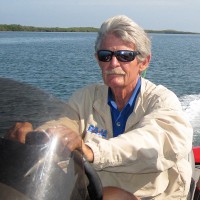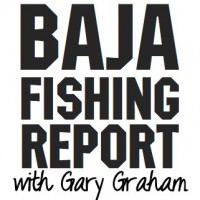
The waters and the fishing in Baja are ever changing. Every few years, Mother Nature decides to throw a curve ball at the angler who has gotten used to going to certain areas to fish for certain species.
For instance, even in June, the water off the Bull Ring, along with the flats toward the Coronado Islands, south to Ensenada, remains cold and off-color.
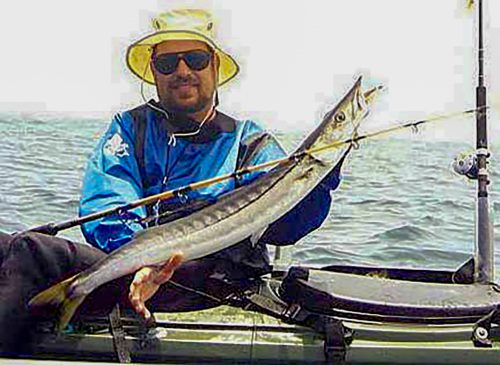
However, the small fleet of private and sports boats fishing the islands are finding a few yellowtail together with a bunch of legal-size barracuda.
Yellowtail are running up and down the ridge on the Middle Grounds area, and you can catch them while sitting on the anchor, chumming and simply waiting. Or you can wander around, looking for bird schools. Yellowtail and barracuda have been on these recently.
More mixed yellowtail and barracuda have been found from the lighthouse south through the 5 Minute Kelp, SKR and the Rockpile. Most of this is bird school stuff and may or may not be up from day to day.
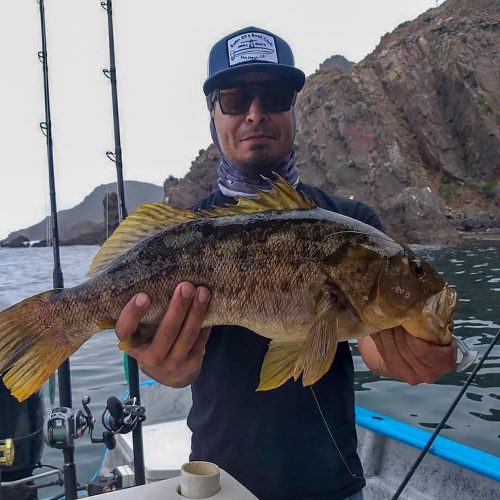
Anglers in the boiler rocks in the Middle Island area are seeing a decent calico bass bite. They are in spawning mode and aggressive. Plastic swim bait thrown to the boiler rock and wound back through the foamy white water will draw strikes from the big, hungry bass.
The primary location for the fleet and many private boaters attracted by the tonnage of tuna is San Salvador Knoll/371/390/Upper Hidden to North of 32 00. The water is NOT ideal. It’s off-color, yet the tuna are here for the tonnage of red crab and small micro-fin bait in the area.
Some boats are running from spot-to-spot for tuna, but others are taking a different approach. They look until they get a good sonar mark or find a big spot of puddlers; then they shut down and set up LONG drifts while keeping a steady chum-line going. Several boats had tuna sticks with them or flash them repeatedly during the day; they seem to get a bit better as they are not spooking the fish by rolling up on them.
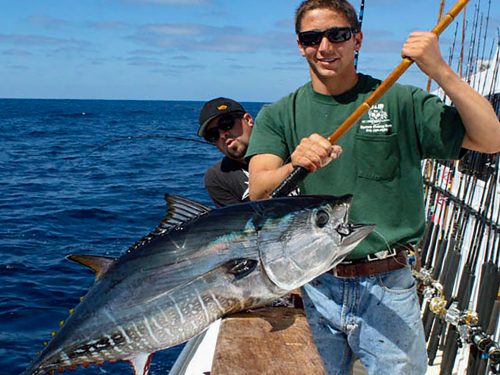
The bluefin are from 60- to 90-pounds, though there are also schools running 100- to over 200-pounds. The yellowfin are from football-sized to about 30 pounds.
The yellowtail are nice-sized 10- to 20-pound fish with a few larger fish in the mix.
The local fleets from Ensenada to San Quintín continue to produce limits of rockfish and lingcod, along with yellowtail and a few larger halibut.
The few boats venturing offshore from San Quintín have been rewarded with hefty bluefin tuna on top-water lures.
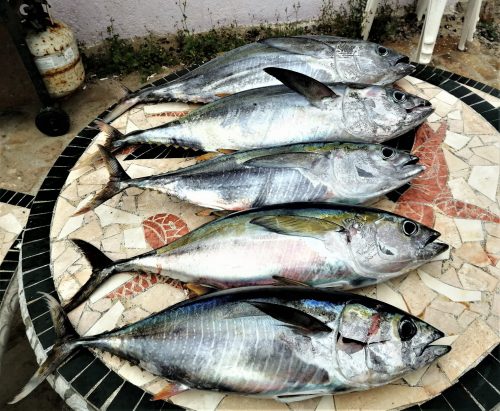
At Bahía Asunción, not far offshore, the yellowfin are frolicking to the delight of all.
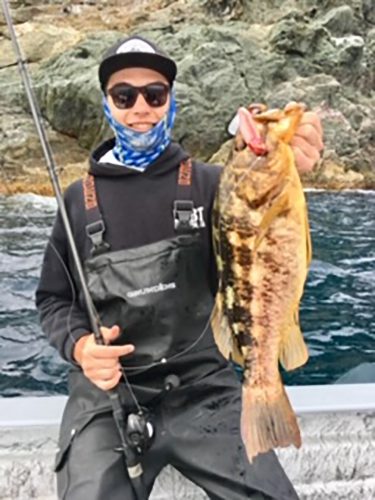
At Cedros Island, the season is well underway with big yellows and bass hitting swim bait and surface iron—all colors. Fishing is under the birds on the south end of the Island—water temp is 64°, blue, and with lots of bait and red crab.
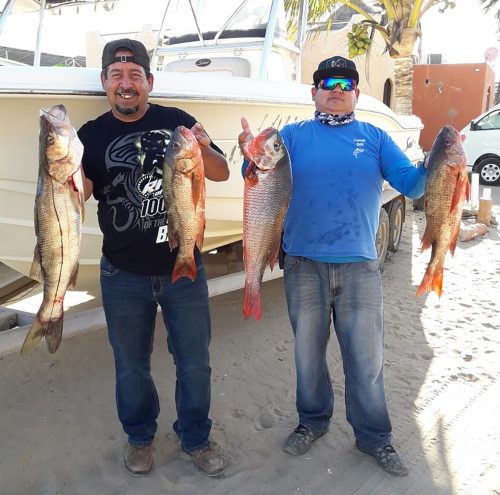
At Magdalena Bay, inside is beginning to produce mixed catches of pargo and grouper plus a few black snook and corvina.
There’s been little news from San Felipe—just a few bottom fish at Consag Rock, but farther down at Bahia de Los Angeles fishing seems to be on fire with yellowtail, grouper and huge cabrilla (released).
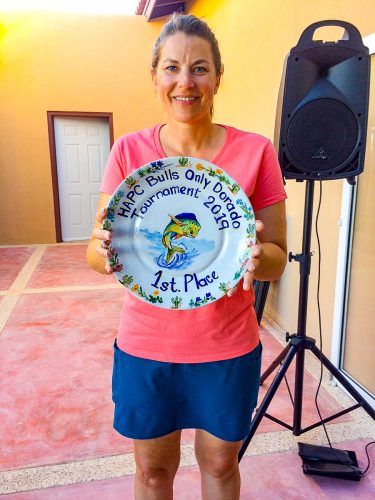
Punta Chivato hosted their “Bulls Only” tournament. Anglers had a rough time on the water, but there were a lot of mostly small fish caught. Tami Peabody won the event with a 25-pound bull. She also won the Calcutta because she bought her boat, “Kinae.” Her winnings were $3,500 US.
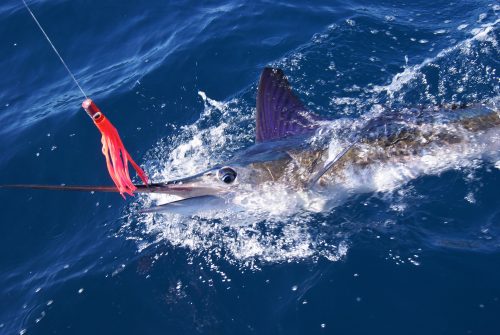
The striped marlin bite out of Loreto is better than it has been for years. When the seaweed paddies disappeared six or eight years ago, the dorado disappeared as well, and billfish became much harder to find. Still, not much seaweed, but marlin are back, and there are credible reports of some “keeper” dorado.
At Los Arenas, there are snapper, pargo, and cabrilla and lots of bonito. Jack crevalle and epic roosterfish, running 10 to 70 pounds, have kept rods bent. Some pangas caught two, three or four fish each day and lost several more! Many anglers took their first or largest rooster ever.
At East Cape, the hot tuna bite is the highlight now. Most have been school-sized caught while trolling, but larger ones from 25- to 50-pounds were caught using squid, live bait, or the kite rig. Marlin are still around with trolled marlin lures and ballyhoo the ticket. Roosterfish action continues to improve because there is a lot of bait inshore and the roosters found them.
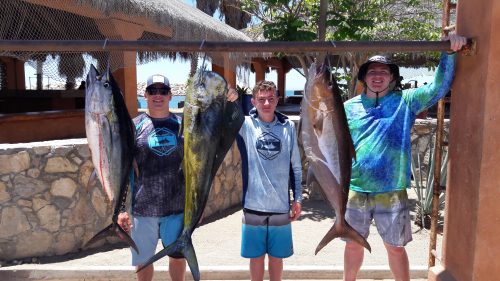
The sportfishing fleets at Puerto Los Cabos are concentrating on the grounds from the Iman to San Luis Bank, switching back and forth daily. Drift fishing with strips of squid for yellowfin tuna ranging from 15- to 80-pounds, as well as slow-trolling live bait, has been productive. Most boats were having at least a chance or two, with some charters landing as many as three or four. The best action was earlier in the morning.
These same grounds were producing an occasional dorado, with a few nicer-sized bulls over 25 pounds.
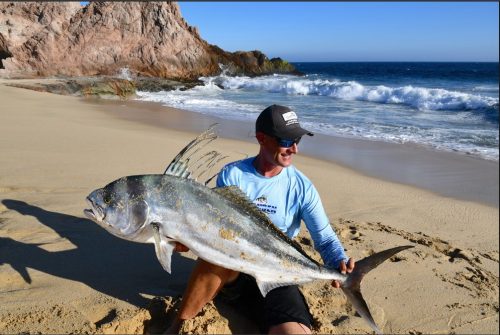
At Cabo San Lucas, changing weather has made fishing challenging. Still, marlin numbers have been good: 85 released for 40 boats. Dorado and tuna were scarce—only a couple caught—but the inshore fishing held up. There were lots of large roosterfish, some caught from shore, plus yellowtail, sierra, bonito, snapper, and triggerfish. One notable catch was a swordfish, found on the surface close to shore and caught on 40-pound test.
As summer settles in Baja, it’s important to focus on what’s biting, not on what you expected. As an example, in Loreto, July is traditionally a dorado month; however, this year the striped marlin are thick! With that in mind, enjoy your Baja fishing!
Cheers,
Gary Graham, That Baja Guy
thatbajaguy@gmail.com
Questions and comments are always welcome.
With more than five decades of fishing experience – from light tackle and fly to offshore billfish – Gary Graham has experienced all aspects of fishing in the Southern California and Baja waters. His observations of species behavior, tackle and techniques are always from his unique perspective, earning him the respect of his peers as well as anglers who eagerly follow his Baja reports and features.
Gary maintained a home at East Cape in Baja Sur for more than 18 years and still spends nearly half of each year exploring the entire peninsula in his self-contained Roadtrek van. He observes everything Baja, from the mysteries of a tide pool on a deserted Baja beach filled with tiny sea creatures to the largest billfish in the sea.

